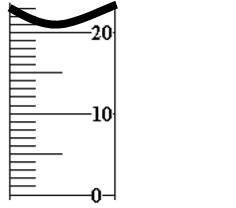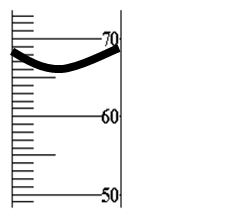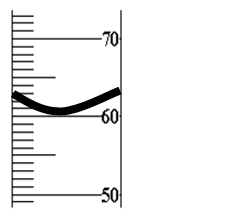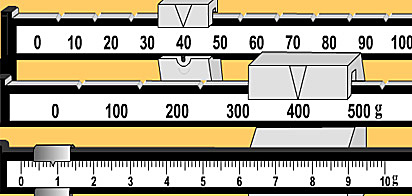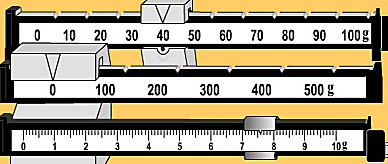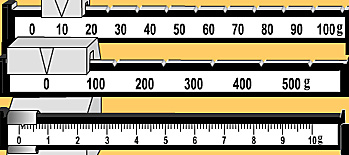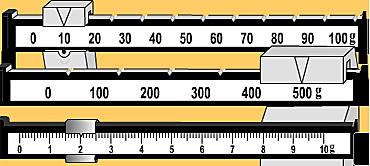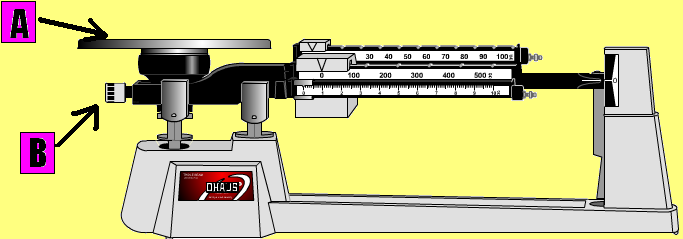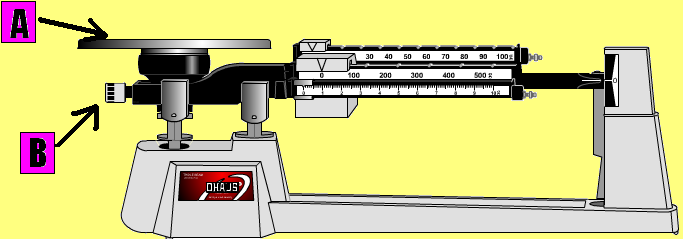Scientific Method And SI System (John Glenn- Mac)
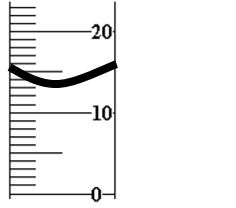
This is a 35 point test on the Metric System (SI) and scientific method.
- 1.
When using the scientific method a scientist first needs a problem. After the scientist has a problem, they next:
- A.
run an experiment.
- B.
Make a hypothesis.
- C.
Collect information about the problem and makes observations.
- D.
State the conclusion.
Correct Answer
C. Collect information about the problem and makes observations.Explanation
After identifying a problem, the next step in the scientific method is to collect information about the problem and make observations. This involves gathering relevant data and facts related to the problem at hand, as well as carefully observing and analyzing any existing information or phenomena that may be relevant to the problem. This step helps the scientist gain a better understanding of the problem and provides a foundation for forming a hypothesis and designing an experiment.Rate this question:
-
- 2.
A proposed solution to a problem or an educated guess is called a(n):
- A.
Hypothesis
- B.
Conclusion
- C.
Variable
- D.
Constant
Correct Answer
A. HypothesisExplanation
A proposed solution to a problem or an educated guess is called a hypothesis. This term is commonly used in scientific research to describe a potential explanation or prediction that can be tested and analyzed. A hypothesis is based on existing knowledge and observations, and it serves as a starting point for further investigation and experimentation. It helps researchers formulate specific research questions and design experiments to gather evidence and support or reject the hypothesis.Rate this question:
-
- 3.
While doing an experiment on pesticides, a group of plants is treated with a pesticide. Another group is not. Those treated with the pesticide are called the:
- A.
Experimental group
- B.
Hypothesis group
- C.
Control group
- D.
Procedural group
Correct Answer
A. Experimental groupExplanation
In this experiment, the group of plants that is treated with the pesticide is called the experimental group. This group is being subjected to the variable being tested, which is the pesticide. By comparing the results of the experimental group to the group that is not treated with the pesticide (the control group), researchers can determine the effects of the pesticide on the plants. The experimental group allows for the observation and analysis of the pesticide's impact on the plants, helping to draw conclusions about its effectiveness or potential harm.Rate this question:
-
- 4.
In scientific studies throughout the world, the system scientist use for measuring is the:
- A.
Metric system (SI)
- B.
English system
- C.
World system
- D.
Yard system
Correct Answer
A. Metric system (SI)Explanation
The correct answer is the metric system (SI) because it is the most widely used system of measurement in scientific studies worldwide. The metric system is a decimal-based system that provides a consistent and standardized way of measuring various quantities such as length, mass, and volume. It is preferred in scientific research because of its simplicity, ease of conversion, and uniformity across different scientific disciplines. The English system, world system, and yard system are not as widely used or recognized in scientific studies compared to the metric system.Rate this question:
-
- 5.
A liter is used to measure:
- A.
Length
- B.
volume
- C.
mass
- D.
Weight
Correct Answer
B. volumeExplanation
A liter is a unit of measurement used to measure volume. It is commonly used to measure the volume of liquids, such as water or milk. One liter is equal to 1,000 milliliters or 1 cubic decimeter.Rate this question:
-
- 6.
If I wanted to measure how long my desk is, the easiest unit I could measure it in is the:
- A.
Kilometer
- B.
Kiloliter
- C.
Cg.
- D.
Centimeter
Correct Answer
D. CentimeterExplanation
The easiest unit to measure the length of a desk would be the centimeter. This is because centimeters are smaller units of measurement compared to kilometers and kiloliters, making it more suitable for measuring the length of a small object like a desk. Additionally, using centimeters allows for more precise measurements compared to using cg (which is not a commonly used unit of measurement).Rate this question:
-
- 7.
A paper clip has the mass of about:
- A.
1.00 kg.
- B.
1.0 g.
- C.
100.0 g.
- D.
1.0 m.
Correct Answer
B. 1.0 g.Explanation
A paper clip is a small and lightweight object, so it would have a very small mass. The unit "g" stands for grams, which is a metric unit used to measure mass. 1.0 g is a reasonable estimate for the mass of a paper clip, as it falls within the range of typical masses for small objects like this.Rate this question:
-
- 8.
Convert the following: 50.1 kilometers into millimeters.
- A.
501. mm
- B.
.00501 mm
- C.
5010000. mm
- D.
50100000. mm
Correct Answer
D. 50100000. mmExplanation
To convert kilometers to millimeters, you need to multiply the given value by 1,000,000 because there are 1,000,000 millimeters in a kilometer. Therefore, 50.1 kilometers is equal to 50,100,000 millimeters, which is represented by the answer choice 50100000. mm.Rate this question:
-
- 9.
Convert the following: 22.3 cm. into dam
- A.
.0223 dam
- B.
.223 dam
- C.
2230.dam
- D.
.00223 dam
Correct Answer
A. .0223 damExplanation
To convert cm to dam, we need to move the decimal point 2 places to the left. In this case, 22.3 cm would become .223 dam.Rate this question:
-
- 10.
Which is equal to 60.0 meters?
- A.
.600 dm
- B.
6000. cm
- C.
600000000. km
- D.
6.00 mm
Correct Answer
B. 6000. cmExplanation
The given options are in different units of length. To determine which option is equal to 60.0 meters, we need to convert all the options to meters.
- .600 dm = 0.600 meters (1 meter = 10 decimeters)
- 6000. cm = 60.00 meters (1 meter = 100 centimeters)
- 600000000. km = 600000000000 meters (1 kilometer = 1000 meters)
- 6.00 mm = 0.006 meters (1 meter = 1000 millimeters)
Among these options, 6000. cm is equal to 60.0 meters.Rate this question:
-
- 11.
Which is a unit of volume?
- A.
dal
- B.
Milligram
- C.
Centimeter
- D.
Hg.
- E.
Mm.
Correct Answer
A. dalExplanation
A dal is a unit of volume used in Indian cooking to measure lentils, beans, and other dry ingredients. It is equivalent to 1/10th of a liter or 100 milliliters. Therefore, dal is the correct answer as it is a unit specifically used to measure volume.Rate this question:
-
- 12.
Mass:
- A.
Is measured in decimeters
- B.
is measured with a graduated cylinder
- C.
Is measured with a thermometer
- D.
is measured with a balance
- E.
Is a measure of gravity’s pull on an object
Correct Answer
D. is measured with a balanceExplanation
Mass is measured with a balance. A balance is a device used to measure the mass of an object by comparing it to a known mass. It works on the principle of equilibrium, where the unknown mass is balanced against a set of known masses on one side of the balance. By adjusting the known masses until the balance is in equilibrium, the mass of the unknown object can be determined. Therefore, using a balance is the correct method for measuring mass.Rate this question:
-
- 13.
Length:
- A.
Is measured in meters
- B.
Is measured with a graduated cylinder
- C.
Is measured with a thermometer
- D.
is measured with a balance
- E.
Is a measure of gravity’s pull on an object
Correct Answer
A. Is measured in meters -
- 14.
Weight:
- A.
Is measured in decimeters
- B.
Is measured with a graduated cylinder
- C.
Is measured with a thermometer
- D.
is measured with a balance
- E.
Is a measure of gravity’s pull on an object
Correct Answer
E. Is a measure of gravity’s pull on an objectExplanation
Weight is a measure of gravity's pull on an object. It is the force with which an object is attracted towards the center of the Earth or any other celestial body. Weight is typically measured using a balance, which compares the gravitational force acting on an object to a known reference mass. It is different from mass, which is a measure of the amount of matter in an object and is typically measured in kilograms.Rate this question:
-
- 15.
Volume:
- A.
Is measured in decimeters
- B.
Is measured with a graduated cylinder
- C.
Is measured with a thermometer
- D.
is measured with a balance
- E.
Is a measure of gravity’s pull on an object
Correct Answer
B. Is measured with a graduated cylinderExplanation
Volume is a measure of the amount of space occupied by an object or substance. It is commonly measured using a graduated cylinder, which is a cylindrical container with marked increments to indicate the volume. The graduated cylinder allows for precise measurement of liquid volume by reading the level of the liquid at eye level. Other instruments mentioned, such as a thermometer, balance, and decimeters, are not specifically used for measuring volume.Rate this question:
-
- 16.
What is the volume of liquid in the cylinder?
- A.
16.0 ml
- B.
10.6 ml
- C.
10.3 ml
- D.
13.0 ml
Correct Answer
D. 13.0 mlExplanation
The correct answer is 13.0 ml. This is the volume of liquid in the cylinder.Rate this question:
-
- 17.
What is the volume of liquid in the cylinder?
- A.
21ml.
- B.
20 ml.
- C.
20.5 ml.
- D.
22 ml.
- E.
23 ml.
Correct Answer
C. 20.5 ml.Explanation
The correct answer is 20.5 ml. This can be determined by calculating the volume of a cylinder using the formula V = πr^2h, where V is the volume, π is a constant (approximately 3.14), r is the radius of the cylinder, and h is the height of the cylinder. Since the question does not provide the radius or height of the cylinder, it is not possible to provide an accurate explanation.Rate this question:
-
- 18.
What is the volume of the liquid in the graduated cylinder?
- A.
60 ml
- B.
65 ml
- C.
69 ml
- D.
65.5ml
Correct Answer
D. 65.5mlExplanation
The volume of the liquid in the graduated cylinder is 65.5ml.Rate this question:
-
- 19.
What is the volume of the liquid in the graduated cylinder?
- A.
60.0 ml
- B.
62.0 ml
- C.
62.4 ml
- D.
63.1 ml
- E.
63.2 ml
Correct Answer
A. 60.0 ml -
- 20.
The monkey hates the baboons. This is an example of a:
- A.
Observation
- B.
Opinion
Correct Answer
B. OpinionExplanation
This statement expresses a personal feeling or preference of the speaker, rather than stating a fact that can be objectively proven or disproven. It is based on the subjective viewpoint of the monkey and cannot be verified or proven to be true for everyone. Therefore, it is an opinion.Rate this question:
-
- 21.
The monkey threw the banana 25.3 meters in the air. This is an example of an:
- A.
Opinion.
- B.
Observation.
Correct Answer
B. Observation.Explanation
The statement describes a factual event of a monkey throwing a banana a specific distance in the air. It does not involve any personal judgment or subjective viewpoint, making it an observation rather than an opinion.Rate this question:
-
- 22.
What is the total mass shown on the beams below?
- A.
440.9 g
- B.
400.9g
- C.
440.1g
- D.
449.2g
- E.
202.4g
Correct Answer
A. 440.9 gExplanation
The total mass shown on the beams below is 440.9 g.Rate this question:
-
- 23.
What is the total mass shown on the beams below?
- A.
40.6 g.
- B.
47.6 g
- C.
40.76 g.
- D.
47.1 g.
- E.
48.0 g.
Correct Answer
B. 47.6 gExplanation
The total mass shown on the beams below is 47.6 g.Rate this question:
-
- 24.
What is the total mass shown on the beams below?
- A.
10.11 g.
- B.
11.1 g.
- C.
12.1 g.
- D.
121.0 g.
Correct Answer
A. 10.11 g.Explanation
The total mass shown on the beams below is 10.11 g because it is the only option that matches the given answer.Rate this question:
-
- 25.
What is the total mass shown on the beams below?
- A.
510.2 g.
- B.
511.2 g.
- C.
512.01g.
- D.
5100.12 g.
- E.
521.01g.
Correct Answer
C. 512.01g.Explanation
The total mass shown on the beams below is 512.01g because when we add up the masses on each beam, we get a total of 510g. However, there is an additional 2.01g mass on the right side of the balance, making the total mass 512.01g.Rate this question:
-
- 26.
How long is the green line in centimeters?
- A.
7.21cm.
- B.
7.0 cm.
- C.
72.1 cm.
- D.
721.0 cm.
- E.
7.1 cm.
Correct Answer
A. 7.21cm.Explanation
The green line is 7.21 cm long.Rate this question:
-
- 27.
How long is the green line in millimeters?
- A.
7.2 mm
- B.
72.1 mm
- C.
.721 mm
- D.
70.2 mm
- E.
702. mm
Correct Answer
B. 72.1 mmExplanation
The correct answer is 72.1 mm because it is the only option that matches the given measurement. The other options are either too small or too large to be the length of the green line.Rate this question:
-
- 28.
How long is the blue line in millimeters?
- A.
11.0 mm.
- B.
100.1 mm.
- C.
101.0 mm.
- D.
10.1 mm.
- E.
10000000000000000000000000000000000.1 mm.
Correct Answer
C. 101.0 mm.Explanation
The blue line is measured in millimeters and the correct answer is 101.0 mm.Rate this question:
-
- 29.
How long is the blue line in centimeters?
- A.
100.1 cm
- B.
101.0 cm
- C.
10.10 cm
- D.
11.0 cm
- E.
100000000000000000000000000000000000000000000.1 cm
Correct Answer
C. 10.10 cmExplanation
The blue line is 10.10 cm long.Rate this question:
-
- 30.
Jet Pride. Give it. __________it (Fill in the blank)
- A.
Take
- B.
Love
- C.
Get
- D.
Hope for
- E.
Correct Answer
C. GetExplanation
The word "Get" is the correct answer because it completes the phrase "Give it. Get it." This phrase implies that one should receive or obtain the Jet Pride rather than just giving it away.Rate this question:
-
- 31.
Which is not a step in the scientific method?
- A.
Problem
- B.
Collect Information
- C.
Hypothesis
- D.
Experiment
- E.
Variation Controlled Balance
Correct Answer
E. Variation Controlled BalanceExplanation
The step "Variation Controlled Balance" is not a part of the scientific method. The scientific method typically consists of the following steps: identifying a problem or question, collecting information or conducting background research, formulating a hypothesis, designing and conducting an experiment to test the hypothesis, analyzing the data collected, and drawing conclusions based on the results. The step "Variation Controlled Balance" does not fit into this framework and is therefore not a step in the scientific method.Rate this question:
-
- 32.
Letter "A" is pointing to what part of the balance?
- A.
Base
- B.
Riders
- C.
Pan
- D.
Zeroing or Adjustment Knob
Correct Answer
C. PanExplanation
The letter "A" is pointing to the pan of the balance. The pan is the flat surface where the object being weighed is placed.Rate this question:
-
- 33.
Letter "B" is pointing to what part of the balance?
- A.
Base
- B.
Riders
- C.
Pan
- D.
Zeroing or Adjustment Knob
Correct Answer
D. Zeroing or Adjustment KnobExplanation
The letter "B" is pointing to the Zeroing or Adjustment Knob of the balance. This knob is used to reset the balance to zero or make adjustments to the weighing scale. It allows the user to calibrate the balance and ensure accurate measurements.Rate this question:
-
- 34.
Which one is the longest
- A.
1 mm
- B.
1 cm
- C.
1 m
- D.
1 dm
- E.
1 hm
Correct Answer
E. 1 hmExplanation
1 hm (hectometer) is the longest measurement among the given options. Hectometer is a unit of length in the metric system, where "hecto" represents 100. Therefore, 1 hm is equal to 100 meters. In comparison, 1 m (meter) is shorter than 1 hm, 1 cm (centimeter) is shorter than 1 m, 1 mm (millimeter) is shorter than 1 cm, and 1 dm (decimeter) is shorter than 1 m.Rate this question:
-
- 35.
Which one would be a correct unit to measure mass in?
- A.
Cl.
- B.
Cm.
- C.
Cg.
- D.
Cc.
- E.
Abcdefghijklmnopqrstuvwxyz
Correct Answer
C. Cg.Explanation
The correct unit to measure mass is "cg" which stands for centigrams. This unit is commonly used in scientific measurements as it represents one hundredth of a gram. The other options, such as "cl" (centiliters), "cm" (centimeters), and "cc" (cubic centimeters) are units used to measure volume or length, not mass. The last option, "abcdefghijklmnopqrstuvwxyz," is not a valid unit of measurement.Rate this question:
-
Quiz Review Timeline +
Our quizzes are rigorously reviewed, monitored and continuously updated by our expert board to maintain accuracy, relevance, and timeliness.
-
Current Version
-
Mar 21, 2023Quiz Edited by
ProProfs Editorial Team -
Oct 09, 2009Quiz Created by
Chessboywonder
 Back to top
Back to top



